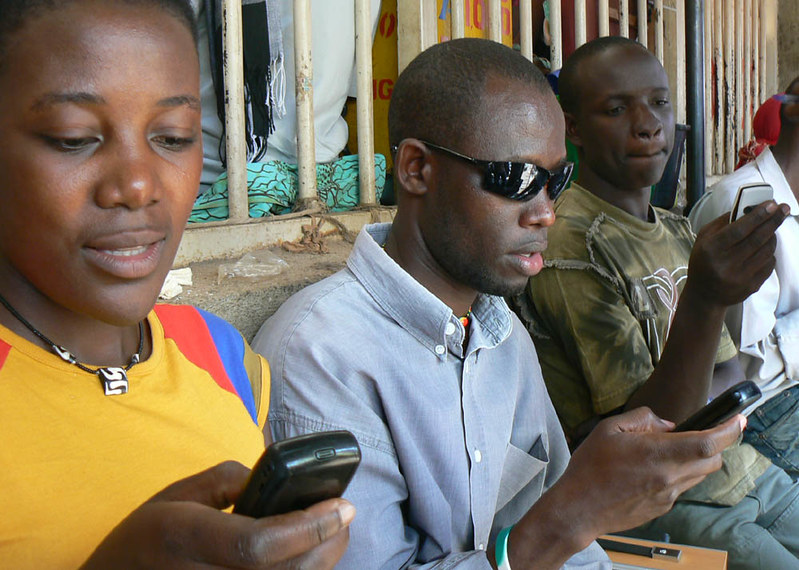A few weeks ago, I was sitting on a panel for a conference on Information and Communications Technology and Development. The debate on my panel was a lively one, and came down to one issue: Can information technology (by itself) lead to development? Obviously there has been a lot of buzz about this topic -- Jeffrey Sachs has called the mobile phone the “single most transformative technology” for development, and Rwandan President Paul Kagame once stated that mobile phones were becoming a “basic necessity” for Africa. Previously, I have argued that mobile phones are not the silver bullet for development (and I still believe this). But just because something doesn’t save the world doesn’t mean that we can or should dismiss it as the latest development fad, either. Mobile phones have something to teach us about the adoption of other technologies, and I think we have something to learn.Since the 1960s, there have been numerous innovations in agriculture, health, medicine, energy and information and communications that could potentially improve the well-being of poor populations in developing countries. Examples of welfare-enhancing technologies abound, from improved cook stoves to solar lamps and high-yielding varieties to insecticide treated bednets. Such technologies have had varying adoption “successes” in low-income countries, ranging from complete failure (no adoption) to relative success in certain contexts and for certain technologies (Green Revolution, anyone?) Obviously there are different reasons for this – the technologies just aren’t useful or profitable; they are too risky; they are difficult to use; the “complementary” input (credit, labor) markets don’t exist; they ask people to change fundamental social behaviors; or they were “pushed” out to developing countries with little to no adaptation.Mobile phones, by contrast, have been one of the most successful technologies ever introduced and adopted in the developing world. There are over 4 billion mobile phone subscribers worldwide, including 1.7 million in Asia, 460 million in Latin America and 376 million in sub-Saharan Africa. While initial adopters were primarily male, rich, educated and urban residents, current adopters span the spectrum of rich and poorer, educated and uneducated, men and women. Adoption has occurred in different political environments (from Ghana to Somalia), in countries with multiple languages (e.g., Nigeria has 62 million subscribers and over 100 languages), with different mobile phone service providers and without (substantial) investment from the public sector. In fact, some of the poorer populations in the poorest countries in the world are adopting mobile phones – all despite the fact that mobile phone handsets, as well as voice and SMS services, are still relatively expensive. What can we learn from mobile phone adoption in developing countries for other technologies?While this is a complex question, from a qualitative perspective, the answers might not be so difficult:
- Unlike many technologies, mobile phones have multiple uses (voice, SMS and internet) and multiple purposes, which can therefore translate into diverse economic and social benefits – such as talking with friends and family members, obtaining price or labor market information or asking colleagues for financial help.
- Many of these benefits are tangible and immediate, thereby allowing people to decide fairly quickly what those benefits are – rather than waiting for specific periods of the year.
- Mobile phones (especially the voice operations) are fairly easy to use, do not require literacy and can be learned quickly by practicing or from others.
- Not everyone needs to use a mobile phone to benefit from it. Multiple people can use one mobile phone, which means that its cost can be shared among multiple users. At the same time, there are potential spillovers, since multiple people can benefit from one person’s use (e.g., information-sharing).
- Mobile phones can be easily adapted to local contexts. While the technology is still relatively new, mobile phones do not necessarily ask individuals to drastically change their existing agricultural, social or cultural practices. Rather, they provide an alternative form of communication.
- The mobile phone distribution system – handsets, SIM cards, scratch cards and charging services – extends into urban and rural areas (Coca-Cola, anyone)? This means that mobile-related services are available to users, thereby facilitating adoption. And the way in which those services are provided – via the pre-paid system -- allows credit-constrained users to buy credit as they need it, and for increasingly tiny amounts.
Disclaimer
CGD blog posts reflect the views of the authors, drawing on prior research and experience in their areas of expertise. CGD is a nonpartisan, independent organization and does not take institutional positions.





